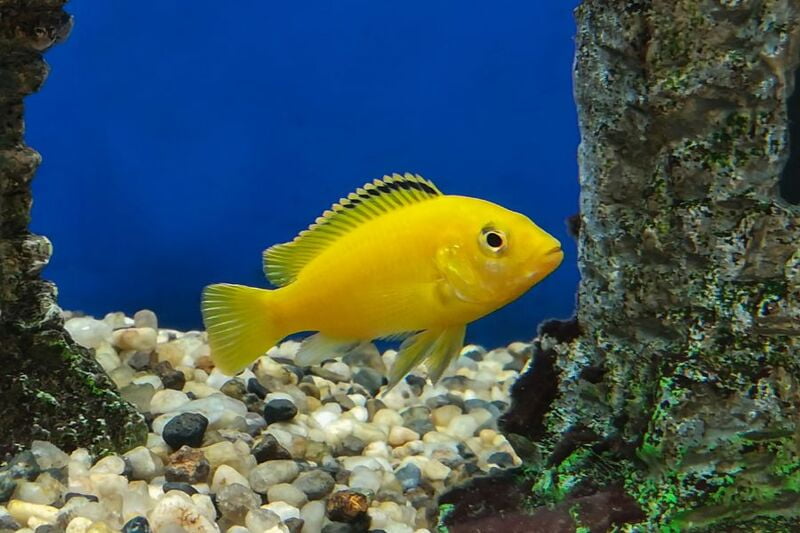
Electric Yellow
Labidochromis caeruleus, commonly known as the electric yellow cichlid or yellow lab, is a species of cichlid fish native to the rocky shores of Lake Malawi in East Africa. Here are some key characteristics and information about Labidochromis caeruleus:
Appearance:
- These cichlids are known for their vibrant yellow coloration, which gives them the common name "electric yellow."
- They have a sleek and elongated body with a slightly pointed snout.
Size:
- Adult Labidochromis caeruleus typically reach a size of around 3 to 4 inches (7.5 to 10 cm).
Habitat:
- In their natural habitat, they inhabit the rocky areas along the shores of Lake Malawi.
- They are often found in areas with plenty of hiding spots among the rocks.
Behavior:
- Like many cichlids, Labidochromis caeruleus can be territorial, especially during the breeding season.
- They are known for their interesting behaviors and social interactions within a community tank.
Diet:
- In the wild, their diet consists of small invertebrates, insects, and algae.
- In captivity, they can be fed a varied diet of high-quality cichlid pellets, flakes, and occasionally supplemented with live or frozen foods.
Aquarium Care:
- To keep Labidochromis caeruleus in captivity, it's recommended to provide a spacious aquarium with plenty of hiding places and rocks to mimic their natural habitat.
- Maintain stable water parameters with a pH between 7.8 and 8.6 and a water temperature around 75-81°F (24-27°C).
Breeding:
- Breeding these cichlids can be relatively straightforward in captivity.
- They are mouthbrooders, meaning the female will carry fertilized eggs in her mouth until they hatch into fry.
Compatibility:
- While they can be kept with other Lake Malawi cichlids, it's essential to consider the compatibility of species to prevent aggression and territorial disputes.
Labidochromis caeruleus is a popular choice among aquarium enthusiasts due to its striking coloration and interesting behaviors. It's important to research and understand the specific needs of this species to provide them with a suitable and healthy environment in captivity.



